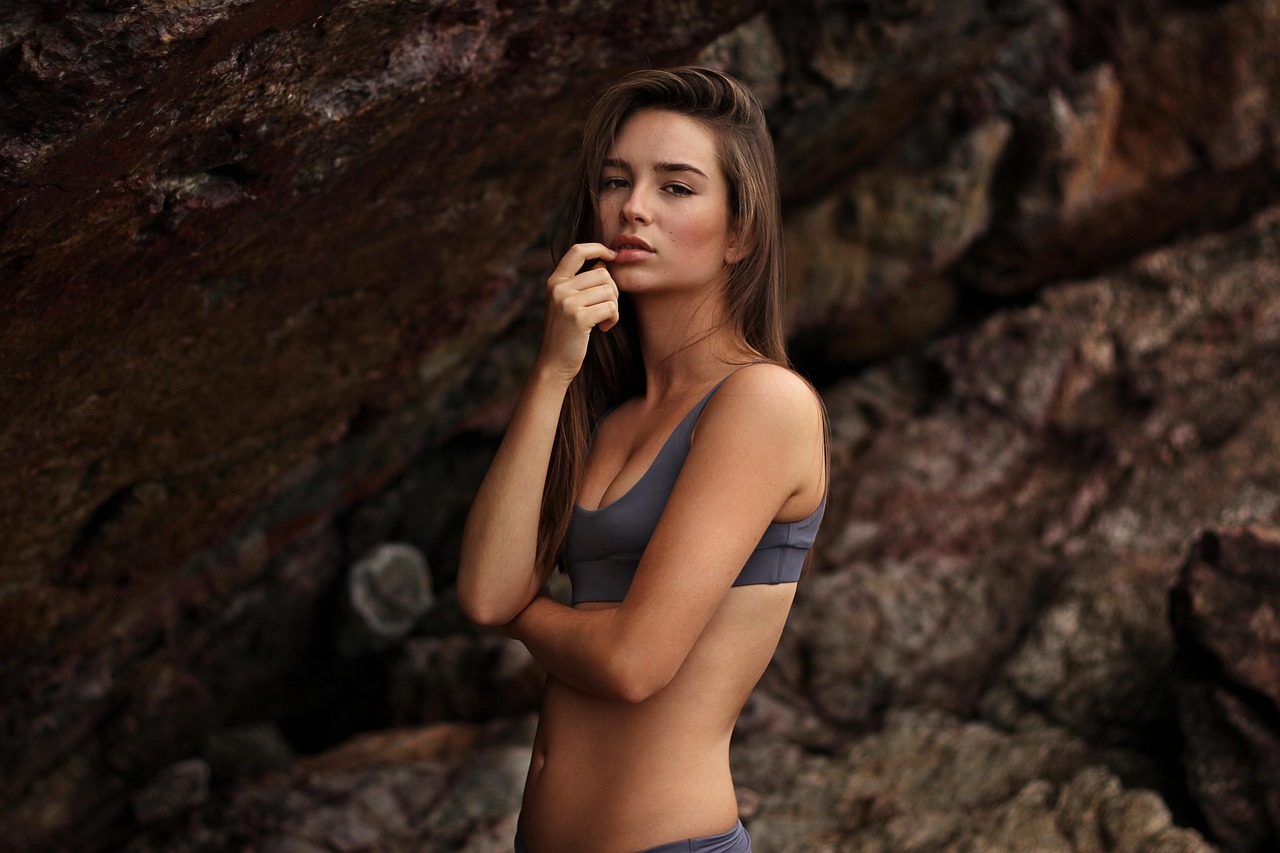Getting signed by a modeling agency can change the trajectory of your career. It opens doors to castings, campaigns, and professional networks that are hard to access on your own. But success doesn’t come from waiting around for someone to discover you, it comes from preparation, persistence, and presenting yourself as a ready-to-work model. If you’ve been wondering how to get signed by a modeling agency, I’ll walk you through what worked for me and what you need to focus on to make that breakthrough moment a reality.
Defining Your Modeling Potential
Before submitting to agencies, I had to understand my value as a model. That meant evaluating my features, height, body type, and personality to figure out where I’d fit best. Agencies represent a wide range of talent, not everyone walks the runway in Paris. Some models do commercial print, others excel in beauty, fitness, editorial, or even fit modeling.
I stood in front of the mirror, took unfiltered photos of myself, and assessed what styles of modeling aligned with how I looked and what I felt confident doing. The more clarity I had, the easier it became to target the right agencies and present myself accordingly.
Creating the Right Portfolio
No one gets signed without a portfolio that shows potential. I didn’t start with high-budget shoots or a team of professionals. I began with clean, natural lighting, minimal makeup, and outfits that highlighted my frame and proportions.
I made sure to include a variety of shots: a clear headshot, profile views, full-body images, and different expressions. Even when I didn’t have many professional photos, I focused on authenticity and clarity. Agencies don’t want to see filters, over-the-top edits, or elaborate styling. They want to see your face and body in their natural state.
As I built experience, I replaced amateur shots with stronger professional ones. But I never stopped updating my portfolio. It’s a living document of your progress, and it reflects how serious you are.
Submitting Digitals the Right Way
Digitals are simple snapshots taken in natural light. No makeup, no filters, no fancy backdrops. Agencies request these because they want to see what you really look like. I followed the standard poses, front-facing headshot, side profile, full body front and back, and close-up of my face.
When thinking about how to get signed by a modeling agency, submitting solid digitals is step one. I wore basic clothing: a fitted black tank top and skinny jeans or leggings, with clean shoes or bare feet. I made sure my hair was neat, my skin was clean, and I looked presentable. It wasn’t about being glamorous, it was about being real.
I labeled each file clearly, attached them in the correct format, and followed the submission instructions on each agency’s website to the letter. Every detail matters.
Researching Agencies That Fit
Not all agencies are the same. Some specialize in high fashion, others in commercial work, lifestyle brands, or niche modeling. I did extensive research before submitting anything. I read reviews, checked their current roster of models, and made sure they were legitimate businesses with verifiable success stories.
I created a spreadsheet to keep track of who I applied to, what they required, and whether they responded. I never sent a mass email or generic submission. Instead, I tailored my approach, referencing their brand style and explaining why I’d be a good addition to their team.
Knowing how to get signed by a modeling agency also means knowing which ones to avoid. I steered clear of agencies that charged upfront fees or made unrealistic promises. A good agency earns money when you earn money, not before.
Attending Open Calls
Some agencies offer weekly or monthly open calls where aspiring models can walk in, meet scouts, and be evaluated on the spot. I prepared for these like I would for a job interview. I wore fitted, simple clothing, brought my portfolio, comp cards, and a positive attitude.
When I entered the room, I introduced myself with confidence, maintained eye contact, and stood tall. If they asked for a walk or a quick posing session, I did it without hesitation. I treated every open call like a casting, because it was.
Rejection happened. Sometimes I wouldn’t hear back. Other times, I’d get a follow-up asking for more photos. The key was consistency. Each open call was a new chance to improve and make an impression.
Nailing Your Personal Presentation
Agencies evaluate more than just your physical appearance. They look at your energy, how you carry yourself, and whether you seem easy to work with. I worked hard to show up as a polished version of myself, clean, confident, and approachable.
That meant making sure my grooming was on point, my posture strong, and my demeanor friendly. I didn’t try to act like a fashion expert, I simply presented myself as someone eager to learn, ready to work, and able to represent their brand.
If you want to know how to get signed by a modeling agency, start by embodying the model you want to become. From your walk to your voice, how you show up matters just as much as how you look.
Preparing a Strong Comp Card
A comp card is a model’s business card. It includes your best headshot, a few supporting images, and key stats like height, measurements, hair and eye color, and contact info. I printed a batch of high-quality comp cards to bring to castings and open calls.
This small piece of paper helped me leave a lasting impression. Even when agencies didn’t sign me immediately, they had a record of who I was and how to contact me. Over time, some circled back when the right opportunity arose.
You never know when your look might match a campaign, so having a clear, professional comp card ready at all times is crucial.
Staying Active and Practicing Daily
Modeling is a skill, and like any skill, it improves with practice. I set aside time every day to work on my walk, poses, facial expressions, and overall presence. I filmed myself, analyzed the footage, and adjusted constantly.
I followed top models on social media, read fashion magazines, and paid attention to what brands were currently booking. This gave me a sense of the industry’s expectations and where I might fit in.
If you’re serious about figuring out how to get signed by a modeling agency, you need to show that you’ve done the work. Agencies love models who are self-motivated, well-prepared, and aware of industry trends.
Maintaining a Professional Online Presence
Social media is now a powerful tool for scouting and discovery. I treated my Instagram like an extension of my portfolio. Every image I posted was intentional, showcasing my look, work ethic, and ability to engage an audience.
I avoided overly personal content, messy captions, or anything that could harm my reputation. I used social media to build my brand, connect with photographers and stylists, and demonstrate consistency in my look.
Some agencies now request your Instagram handle with your submission. They check your online presence to see how you market yourself. I made sure mine reflected professionalism, creativity, and personality.
Following Up Without Being Pushy
If I hadn’t heard back from an agency after a few weeks, I sent a polite follow-up email. I kept it short and respectful, thanking them for considering my submission and expressing continued interest.
Sometimes they responded with feedback, other times they simply said I wasn’t the right fit. Either way, I took it as a learning experience. I didn’t beg, complain, or resend the same materials every week. I stayed professional and moved forward.
Persistence is part of how to get signed by a modeling agency, but it needs to come with patience and grace.
Accepting Feedback and Improving
Rejection wasn’t the end. It was information. I listened to what agents said. If they told me to lose the heavy makeup in my digitals, I did. If they suggested stronger commercial shots in my portfolio, I booked another shoot.
I remained open to critique, even when it was hard to hear. Modeling is a business, and agencies know what their clients want. If I wanted to work with them, I had to align my presentation with their expectations.
Growth came fast once I stopped taking feedback personally and started using it as fuel.
Signing the Contract Carefully
When I finally got an offer from a reputable agency, I didn’t jump in blindly. I read the contract thoroughly, asked questions, and even had a lawyer look it over. I wanted to understand how commissions worked, what expectations they had, and whether I was allowed to freelance.
A good agency won’t pressure you to sign without time to think. They want you to succeed, and a strong relationship starts with clear communication and trust.
Signing the contract was a milestone, but it was also just the beginning of the next chapter.
Conclusion
If you’ve been asking how to get signed by a modeling agency, know that it’s a mix of preparation, strategy, and professionalism. It’s not about waiting to be discovered, it’s about making yourself discoverable. From strong digitals and a compelling portfolio to a polished presentation and persistent follow-ups, each step plays a part in getting you closer to that signature.
This journey isn’t easy, and it’s full of ups and downs. But with the right mindset and consistent effort, getting signed isn’t a dream, it’s a realistic goal within reach.
Treat yourself like a professional before anyone else does. Show up ready, stay focused, and trust the process. Your signature moment could be just one submission away.

